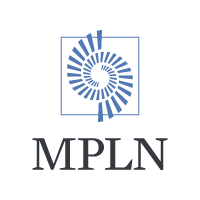Our LIS Blue is a fast, easy-to-use, secure, and accessible laboratory information system developed using the latest web technology.
Test Menu
Home » Test Menu
Solid Tumor Oncology
Anatomic Pathology
Morphology
[SPC] Surgical Pathology Consultation
[SPP] Surgical Pathology Professional
Immunohistochemistry & Special Stains
Refer to Printable IHC Test Menu for IHC Markers
Cytogenetics
[CYTO ST] Chromosome Analysis Solid Tumor
Molecular Oncology
[M COLON NGS] Colorectal Cancer NGS: BRAF, KRAS, NRAS
[M EGFR] EGFR Mutation Analysis
[M ST NGS GIST] GIST NGS: KIT, PDGFRA, BRAF
[M IDH1/2] IDH1/IDH2 Mutation Analysis
Fluorescence in situ Hybridization (FISH)
Panels
[FP BURKITT] Burkitt / “Double Hit” Large B-cell Lymphoma Panel: C-MYC, BCL2, BCL6
Probes
[FP ALK] ALK 2p23 rearrangement
[FP BCL1] IGH::BCL1 fusion t(11;14) [FP BCL2] IGH::BCL2 fusion t(14;18) [FP BCL6] BCL6 / 3q27 rearrangement
[FP CMYC] C-MYC 8q24 rearrangement
[FP EGFR] EGFR amplification 7p11.2
[FP GLI] Oligodendroglioma, 1p-,19q-
[FP HER2 HER2/neu amplification Breast Cancer
[FP HER2 GA] HER2/neu amplification Gastric Cancer [FP IGH] IGH 14q32 rearrangement
[FP IGH MYC] IGH::MYC fusion t(8;14)
[FP MALT] MALT1 18q21 rearrangement
[FP IRF4] IRF4 6p25 rearrangement
[FP ROS1] ROS1 6q22.1 rearrangement
Women's Health
STD and Infectious Disease
[CT] Chlamydia Trachomatis, Qualitative by Aptima COMBO® 2 TMA
[HPV G] Human Papillomavirus Genotyping
[HPV HR] Human Papillomavirus High Risk by Aptima HPV
[HSV] Herpes Simplex Virus Type 1 and 2 Qualitative by PCR
[NG] Neisseria Gonorrhoeae Qualitative by Aptima COMBO® 2 TMA
[TV] Trichomonas Vaginalis by Aptima
Other
Fluorescence in situ Hybridization (FISH)
[F URO] Bladder Cancer Panel (+3, +7, +17, 9p21-)
Cytogenetics
[CYTO PB] Chromosome Analysis Peripheral Blood (Constitutional)
Hematology Oncology
Anatomic Pathology
Morphology
[BMPE] Bone Marrow Pathology Evaluation
[SPC] Surgical PatholAogy Consultation
[SPP] Surgical Pathology Professional
Immunohistochemistry & Special Stains
Refer to Printable IHC Menu for IHC Markers
Cytogenetics
[CYTO BM] Chromosome Analysis Bone Marrow
[CYTO LN] Chromosome Analysis Lymphoma (Lymph Node)
[CYTO LPB] Chromosome Analysis Leukemic Peripheral Blood
Flow Cytometry
[FLOW] Flow Cytometry Leukemia / Myeloma / Lymphoma
[FLOW TC] Flow Cytometry Technical Only
[FLOW M] Flow Cytometry and Morphology
[FLOW BAL] Bronchoalveolar Lavage: CD3, CD4, CD8, CD16, CD45, CD4:CD8 ratio
[FLOW LAD] Leukocyte Adhesion Deficiency: CD11a, CD11b, CD11c, CD18
[FLOW PNH] Paroxysmal Nocturnal Hemoglobinuria – High Sensitivity: FLAER, CD14, CD24, CD59
Molecular Oncology
Next Generation Sequencing (NGS)
[M CALR] Calreticulin type 1 / type 2 Mutation Analysis
[M IgVH] IgVH Somatic Hypermutation
[M JAK2 EX12] JAK2 Exon 12 Mutation
[M MPL] MPL Exon 10 Mutation [M MYD88] MYD88 p.L265P Mutation
[M TP53] TP53 Mutation
[M TCR] T-Cell Receptor Gamma Gene Rearrangement
Fluorescence in situ Hybridization (FISH)
Hematology Panels
[F BURKITT] Burkitt / “Double Hit” Large B-cell Lymphoma: MYC, IGH::MYC, IGH::BCL2, BCL6
[F CLL] Chronic Lymphocytic Leukemia Panel: MYB (6q23), ATM (11q22.3), +12, DLEU1 (13q14.3), TP53(17p13)
[F EOS] Eosinophilia panel: FIP1L1/CHIC2/PDGFRA, 4q12 rearrangement; PDGFRB, 5q32 rearrangement; FGFR1, 8p11.2 rearrangement
[F MDS] Myelodysplasia Panel: -5/5q-, -7/7q-, +8, 20q-
[F MPD] Myeloproliferative Neoplasms Panel: +8, 13q-, 20q-, BCR::ABL1
[F MM] Plasma Cell Neoplasm Panel (performed on cells enriched for CD138+): 1p-, 1q+, +5, +9, IGH::CCND1, 13q-, +15, 17p-
[F MM REF] Plasma Cell Neoplasm Reflex Panel (performed on cells enriched for CD138+): IGH::FGFR3, IGH::MAF
Hematology Probes
[F 4Q12] FIPIL1/PDGFRA 4q12 gene rearrangement
[F 7q] Deletion 7q22 (D7S796, D7S658)/7q31.2 (D7S486)
[F AML ETO] AML1::ETO t(8;21)
[F ATM] ATM/CEP11 deletion 11q22.3
[F BCL1] IGH::BCL1 t(11;14)
[F BCL2] IGH::BCL2 t(14;18)
[F BCL6] BCL6 3q27 rearrangement
[F BCR ABL] BCR::ABL1 t(9;22)
[F CBFB] CBFB t(16;16), inv(16)
[F CMYC] C-MYC 8q24 rearrangement
[F D1314] Deletion 13q14.3
[F D20] Deletion 20q12
[F EGR1] EGR1 5q deletion, monosomy 5
[F ETV6::RUNX1] ETV6::RUNX1 t(12;21) gene fusion
[F FGFR3] IGH::FGFR3 t(4;14) [F IGH] IGH 14q32 rearrangement
[F IGH MAF] IGH::MAF t(14;16)
[F IGH MYC] IGH::MYC t(8;14)
[F IRF4] IRF4 6p25 rearrangement
[F MALT] MALT1 18q21 rearrangement
[F MECOM] MECOM 3q26 rearrangement
[F MLL] MLL (KMT2A) 11q23 Gene Rearrangement
[F MYB] MYB 6q deletion
[F NUP98] NUP98 11p15.5 rearrangement
[F P53] TP53 17p13 deletion
[F PDGFRB] PDGFRB Gene Rearrangement
[F PML RARA] PML::RARA t(15;17)
[F PRDM16] PRDM16 1p36 rearrangement
[F T12] Trisomy 12
[F T21] Trisomy 21
[F T8] Trisomy 8


